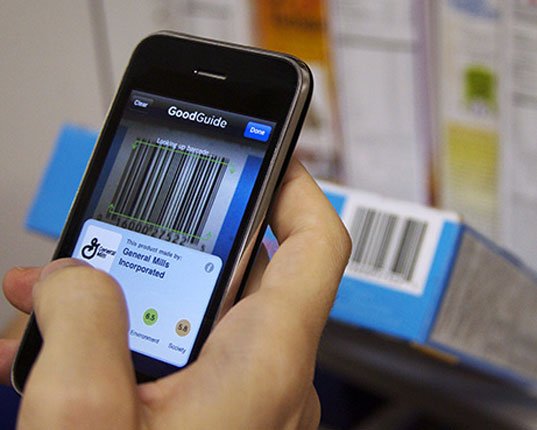Demand For Transparency: Consumers Want To Know Where Their Food Is Coming From

Many consumers these days are skeptical about the claims that manufacturers make regarding their products and a number of consumers are longing for more transparency in the market; people want to know what is going into the food that they are putting on their dinner table.
According to a recent Food Marketing Institute research report from this year, results indicate that US shoppers are looking for clear and honest transparency in product information; details that will assure them of the safety of the food.

The same survey also found that consumers view the grocery store that they frequent, their primary store, as an ally in their pursuit of overall wellness. So it makes sense that they increasingly want to be sure that they are being told honest information and that product manufacturers and retailers are being transparent and somewhat vulnerable in their pursuit of sales.
Consumers want accountability, fairness, quality, and to be able to obtain valuable and reliable information about the product in a reasonable amount of time. The companies out in the market that can meet these needs and cater to what the customer wants, are going to be the ones that excel.

A variety of different initiatives have been used to try and assist consumers in their journey of selecting what products are right for them.
Some options have been things like using certain food label certification programs to ensure quality ingredients were used. Another has been the introduction of a variety of apps that can be used to scan the bar code on the product, revealing a host of details about the manufacturer, ingredients, and more.
Consumers want to know where their food is coming from not only in the US but around the world and food producers need to be aware of this or they will be left behind.
A recent national survey found that 67 percent of consumers want to know the nutritional profile of every dish that they are consuming when they go out to eat. And if they cannot readily find out what is in the dish, then they likely aren't going to trust it. It's clear that consumers want to know what's in it and where it came from.

According to a report from back in 2015, it's estimated that only 38 percent of consumers in the US trust what companies have to say about their products on the food label.
When it comes to trying to convince the consumers of the need to purchase the product, selling points like “made with natural ingredients” and “made naturally” might not cut it with many. These sorts of selling terms saturate the market today and because of this they've earned themselves a lot of scrutiny.
To those food producers and companies that are able to effectively demonstrate a forthcoming transparency in educating their consumers on what their product contains and where it comes from etc, the better they are going to do in the market.
We can see that a number of fast food restaurants are trying to take this approach, making commercials and other marketing advertisements about where their eggs, meat, and other products come from.
For any higher cost involved with transparency in food production, and using better quality ingredients etc, consumers are willing to pay it.
This is evident by the fact that many consumers are willing to pay a premium for things like grass-fed beef, butter, pasture raised eggs and so on, because they believe the product is a higher quality product. According to 2015 data from Nielsen, about 66 percent of consumers would be willing to pay more for products that are made with organic ingredients or made using sustainable methods.
Trust can be built through transparency and many product makers would do well to take note of this and to embrace honesty about their products with consumers.

Pics:
Pixabay
Giphy
GoodGuide/Inhabitat via inhabitat.com/goodguide%E2%80%99s-new-iphone-app-scans-for-green-products/
Pixabay
Sources:
http://www.supermarketnews.com/consumer-trends/shoppers-want-transparency-fmi-trends-report-reveals
http://www.cattlenetwork.com/video/research-indicates-consumers-want-transparency-food-labeling
http://www.foodnavigator-usa.com/Manufacturers/Fishpeople-wants-to-fix-the-fundamentally-broken-seafood-industry
https://www.thecaterer.com/articles/505394/two-thirds-of-consumers-want-menu-nutritional-information
https://www.naturalproductsinsider.com/articles/2017/06/three-steps-to-achieve-transparency-in-beverages.aspx
I'm very glad to see that this is the direction U.S. consumers overall are moving in. It's so important to know what goes into our food. And without that, how can we ever be in control of our health and our bodies. We've spent too many years in the dark on this, and I'm so glad that overall there's more of a tendency now to actually look at ingredients, and know what's in our food. Especially as more than ever, in the last 10 years, big corporations like Monsantos are proving time and time again that they do NOT have our best interests at heart. Great post!
I was watching a documentary where the way foods label Sugar is often hidden like corn sweetener, corn syrup, dextrose, fructose, fruit juice concentrates, glucose, high-fructose corn syrup, invert sugar, lactose, maltose, malt syrup, raw sugar, sucrose, sugar syrup, cane crystals, cane sugar, crystalline fructose, evaporated cane juice, corn syrup solids, malt syrup. Apparently the food industry gets away with this is because of lobbying and it looks like it wont be changed anytime soon.
It's great that consumers are better informed and educated now, and seeking for confirmation and answers. Documentaries like the one you watched help to shed light on the practices of the big food industry players, and at least empowers the consumer to make wise choices.
I've always been a label reader for food products and toiletries. Knowing the code words and numbers (for the flavorings and enhancers) really helps to decipher what the hell is printed on the ingredient list.
Thanks for this comprehensive post that set off a lot of important thought processes, @doitvoluntarily :)
Yeah i didn't even know sweeteners could be flavoured sugar :) Thanks for your comment
You mean comment? ;)
Yes sorry, never checked name against who wrote the original article
Good post. The reality is that consumers are smarter and more health consious and thus with the help of smart technologies do their own due dilligence via their mobile device. This is good because it will make big food chains to improve on quality of foods and even lives of the poor farmers. Thanks for sharing.
definitely following you...love your blog and your posts. What you put in your body is so important. I always remember a trainer telling me to treat your body like it was Lamborghini. You don't put 87 gasoline in a lambo, and you're constantly giving it the best stuff to run efficiently. Love that analogy. Thanks for the post!
Great post! I believe this is why many people are buying local as well! I try to do that myself as often as possible. Our Winn Dixie sells beef from Mexico and other countries but it isn't even labeled that way. The butcher said you have to specifically look for a label stating it was grown in the USA. It is also angering that we have no idea what foods are GMO! Our food is much more toxic than most other countries.
is IMPORTANT
I try and buy as much of my food locally as I can. there is a great farm shop which does loads of fresh produce, which I try and get the majority of our food from. I am really careful with all other products but is can be difficult shopping insupermarkets etc.
Very important point @doitvoluntarily - the consumer is much better informed nowadays thanks to the Internet. Thus, apps which aim to make this ultra-conscious consumer EVEN MORE informed will easily beat out the competition.
It would be especially interesting to build a machine learning app that takes into account user preferences and choices to recommend not only related food products (like the Instacart mobile app) but also the most nutritious choices available. A sort of "healthier food recommendation engine"! Let's see Costco and Whole Foods compete with that! ;)
I use to pay more for grass fed beef when it came from a cattle farm I lived nearby. The beef was amazing. The stuff the you get from the grocery store can't compare. Knowing where my food comes from is very important. Seafood is something I always check the location of. When the BP oil spill happened in 2010 in the gulf there was no way I bought gulf caught shrimp for years.
that BP and fukushima is always on my mind with the seafood lol
Wow, what an in depth look. First thing, the ingredient verification apps look really cool and could be highly effective if done right I imagine. I've never seen those.
I do think you nailed one point!!! I agree the grocery store that can provide the most accurate data to consumers about their food, they will win.
I wonder how Amazon Fresh is going to mix into this debate now buying Whole Foods?